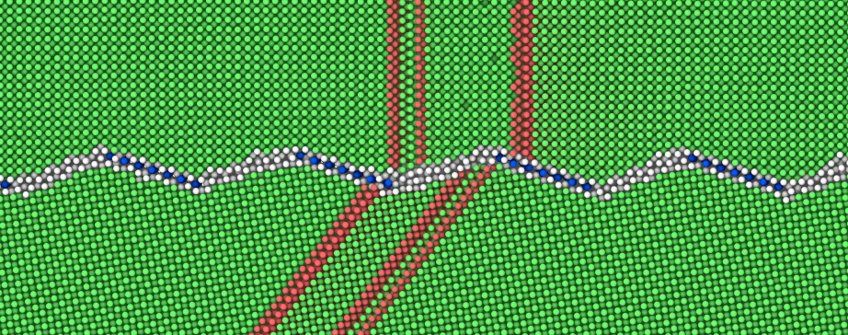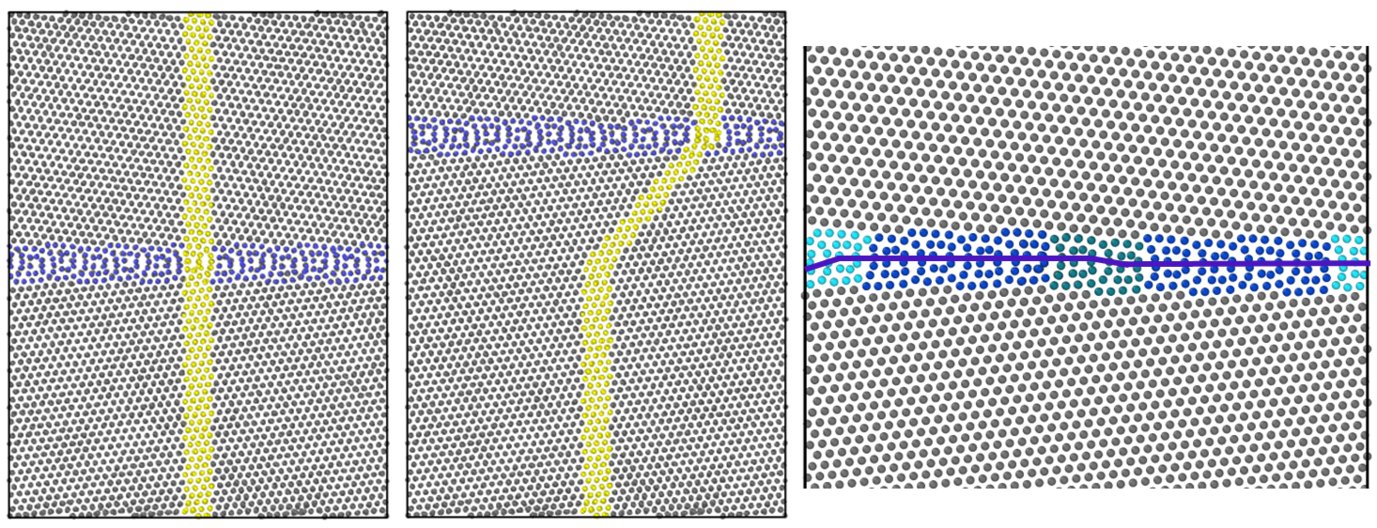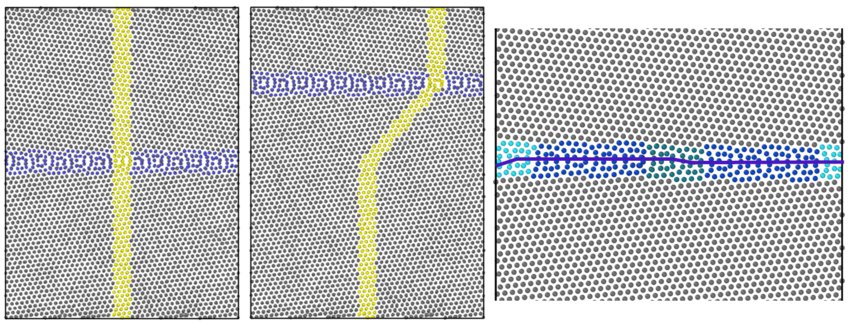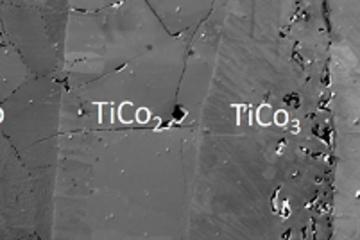
Atomistic computer simulations of the mobility of grain boundaries
In this project, we employ atomistic computer simulations to study grain boundaries. Primarily, molecular dynamics simulations are used to explore their energetics and mobility in Cu- and Al-based systems in close collaboration with experimental works in the GB-CORRELATE project.
We envision that grain boundaries can be engineered in the future to enhance material properties such as mechanical strength, thermal stability, and electrical resistivity. This requires intimate knowledge of the atomistic mechanisms. Grain boundary mobility, e.g., due to external stresses, is significant for microstructural evolution and the plasticity of nanograined systems. The nucleation and motion of disconnections along the grain boundary plane are the underlying mechanism for grain boundary dynamics, and their interactions with other defects in the grain boundary and the bulk can modify these dynamics.
We investigate how the change of grain boundary structure, ranging from atomic arrangements and segregation to faceting transitions, can influence grain boundary migration. Grain boundary phases of various grain boundary types are examined, for example in shear-coupled motion setups. The disconnection modes and the defect energies are analysed. The energy barrier for grain boundary and disconnection motion are evaluated to study grain boundary kinetics. These insights will drive future efforts to engineer the grain boundaries and its phases to obtain favorable properties.













